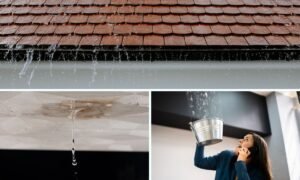Buying a new home is a significant milestone, and ensuring that your property is in top condition is crucial. Snagging, the process of identifying defects and unfinished work, is typically conducted by professionals, but many handy homeowners are choosing to take on the task themselves. At Austenite Technical Services, we understand the value of a thorough snagging inspection. This guide will provide you with essential tips and insights on conducting your own DIY snagging inspection to ensure your new home is defect-free and ready for move-in.
What is Snagging?
Snagging involves inspecting a newly built property to identify any defects, incomplete work, or quality issues that need to be addressed by the builder before you take full possession. These defects, also known as snags, can range from minor cosmetic issues to significant structural problems.
Why Consider DIY Snagging?
Cost Savings
Hiring a professional snagging inspector can be costly. DIY snagging allows you to save money by performing the inspection yourself, provided you have the time and attention to detail required.
Personal Involvement
Conducting your own snagging inspection gives you a deeper understanding of your new home’s condition and the quality of workmanship. It allows you to identify issues that may be particularly important to you and your family’s needs.
Immediate Attention
By doing it yourself, you can immediately address minor issues that can be fixed with simple DIY skills, speeding up the overall snagging process.
Essential Tools for DIY Snagging
Before you start your inspection, gather the following tools:
- Notebook and pen
- Camera or smartphone for taking photos
- Flashlight
- Spirit level
- Tape measure
- Electrical socket tester
- Ladder (if needed)
- Moisture meter
Key Areas to Inspect
Structural Elements
Walls and Ceilings
Look for cracks, damp spots, and uneven surfaces. Pay attention to corners and joints, where defects are often more noticeable.
Floors
Check for uneven or squeaky floors. Use a spirit level to ensure floors are level and flat.
Plumbing and Heating
Faucets and Pipes
Inspect all faucets and pipes for leaks and ensure that water flows smoothly without any interruptions. Check under sinks and around toilets for signs of water damage.
Heating System
Test radiators and underfloor heating systems to ensure they are working correctly and efficiently.
Electrical Systems
Outlets and Switches
Test all electrical outlets and switches to ensure they are functioning properly. Use an electrical socket tester to check for wiring issues.
Light Fixtures
Ensure all light fixtures are securely installed and functioning. Replace any blown bulbs to check the fittings.
Windows and Doors
Seals and Frames
Check that all windows and doors open and close smoothly and that seals are intact to prevent drafts.
Locks and Handles
Ensure all locks and handles are secure and functioning correctly for safety and security.
Finishes and Fixtures
Paintwork and Plaster
Look for any chips, cracks, or uneven finishes in the paintwork and plaster. These can be cosmetic but are important for the overall aesthetic.
Tiles and Grout
Inspect tiling in kitchens and bathrooms for any chips, cracks, or gaps in the grout. Properly installed tiles are crucial for preventing water damage.
External Areas
Roof and Gutters
If accessible, check the roof for missing tiles and inspect gutters for blockages or leaks.
Exterior Walls
Look for cracks, damp spots, and any signs of wear and tear on the exterior walls. These can indicate larger underlying issues.
DIY Snagging Tips
Be Methodical
Approach your inspection room by room, being thorough and methodical. Start from one corner and work your way around, ensuring you don’t miss any areas.
Document Everything
Take detailed notes and photos of every defect you find. This documentation will be essential when discussing repairs with your builder.
Use a Checklist
Having a checklist can help ensure you don’t miss any important aspects of the inspection. It keeps you organized and focused on the task at hand.
Don’t Rush
Take your time with the inspection. Rushing can lead to missed defects and incomplete assessments. A thorough inspection now can save time and money later.
FAQs on DIY Snagging
1. Can I do snagging myself, or should I hire a professional?
You can do snagging yourself if you have the time, tools, and attention to detail. However, for more complex issues or if you’re unsure, hiring a professional is recommended.
2. What are the most common snags in new builds?
Common snags include cracks in walls, leaks, faulty electrical outlets, poor paintwork, and improperly installed fixtures.
3. How long does a DIY snagging inspection take?
A thorough DIY snagging inspection can take several hours, depending on the size and complexity of the property.
4. What should I do if I find a major defect?
Document the defect with detailed notes and photos, then contact your builder immediately to discuss repairs. Major defects should be addressed by professionals.
5. How often should I conduct a snagging inspection?
A snagging inspection should be conducted before taking possession of the property and again after any major repairs or renovations.
6. Is a DIY snagging inspection enough?
A DIY inspection can be effective, but it may not catch all issues, especially hidden or complex defects. Consider a professional inspection for comprehensive assessment.
7. What if my builder refuses to fix the snags?
Refer to your contract and warranties. Most builders are obliged to address defects found within a specified period. Legal advice may be necessary if issues remain unresolved.
8. How can I prepare for a DIY snagging inspection?
Gather all necessary tools, create a checklist, and allocate sufficient time to conduct a thorough inspection. Being prepared helps ensure a comprehensive evaluation.
Conclusion
Conducting a DIY snagging inspection is a practical and cost-effective way to ensure your new home is free from defects and ready for move-in. By following this guide and using the right tools, you can identify and document any issues that need addressing. At Austenite Technical Services, we support homeowners in their quest for quality and excellence. If you find the task overwhelming or want a professional touch, our expert snagging inspectors are here to help. Contact us today to schedule a professional snagging inspection and ensure your new home meets the highest standards.
4o









